Well-known and popular garter stitch – the simplest way of knitting with knitting needles. It is taught to beginner knitters, and is also used for knitting hats and scarves, collars, straps, lapels and cuffs on large items.
What is garter stitch
Handicrafts are very popular today. Knitting is one of the oldest types of applied art. In Egyptian tombs of the 4th-5th centuries, archaeologists found knitted socks, in Europe in the 13th century – gloves, and in Spain in the 16th century, they knitted stockings.
There are craftswomen who have been knitting all their lives and do it masterfully. Each of them learned the basics of this type of needlework from garter stitch, as this is the simplest and most foolproof method, with a number of advantages.
Garter stitch item:
- looks the same on the back and front sides;
- does not deform;
- retains its shape well when worn and after washing.
Despite the simplicity of garter stitch, there are several ways to do it:
- classical;
- "granny" face loops;
- purl stitches.
Classic garter stitch
This knitting method involves using only face loops in each row. In this case, the working thread should be located behind the fabric, and each of the loops is knitted behind the front wall. In this case, the knitting needle is inserted into the loop from left to right, picks up the working thread and pulls it towards itself.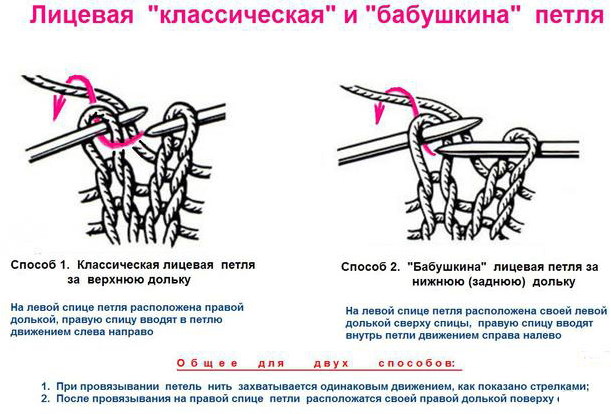
All the loops cast on for work are knitted in this way in each row, regardless of the side of the product (both from the front and from the back). In order for the edges of the work to be beautiful and even, each new row should be started by removing the 1st loop (edge) onto the working knitting needle without knitting.
"Granny" face loops
The "grandmother's" method of knitting face loops consists of knitting each of them behind the back wall. In this case, the working thread, as in the classic garter stitch, is always located behind the working fabric.
Each row should begin with the removal of the 1st loop without knitting. Then the knitting needle should be inserted from right to left behind the back wall of the next loop. It should pick up the working thread and pull it towards itself. All the loops collected for work are knitted in this way. The last of them is also knitted as a face. All rows are completed in this way.
It should be noted that despite the apparent external similarity of works knitted in the classic and "grandmother's" way, there is a significant difference. In the first case, the knitting is looser and stretches well, in the second case, the fabric is denser and more elastic. Upon closer examination, a slight external difference is also visible.
Purl stitches
Knitting garter stitch with purl stitches differs from the above in that the working thread is always in front of the work. In this case, you can use both the classic method and "granny" loops. That is, they can be knitted either behind the front wall of the loops or behind the back.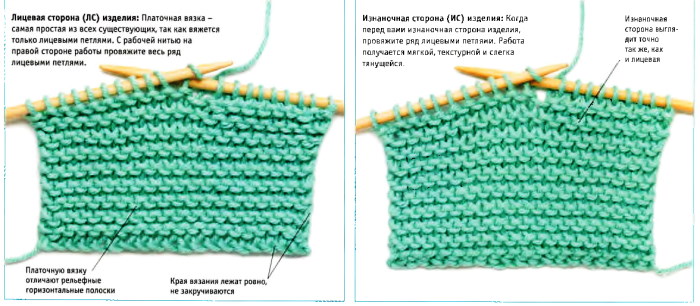
It should be noted that work done with purl stitches has a looser structure and less density.
Necessary tools and materials for making a scarf
Even a beginner craftswoman can make a garter stitch scarf for a child. To do the work, you will need yarn, knitting needles and a crochet hook (to hide the ends of the working thread). To choose them correctly, you need some knowledge.
Spokes
Knitting needles are the main tool for knitting garter stitch items. They are made from different materials. They can be wooden, metal, plastic.
Each knitter has her own preferences in choice, and each type of working tool has its own qualities:
- Wooden knitting needles are light in weight, they are elastic, but they can break; poorly processed working fabric can catch the yarn fibers;
- plastic - light, but bendable;
- Large diameter metal spokes are heavy but durable;
- medium and small - light, durable, do not break or bend.
There are knitting needles made of aluminum. They are very light and budget-friendly, but they have the property of staining (staining) light-colored yarn.
In addition to the difference in quality properties, knitting needles differ in length and diameter (thickness). The density and quality of knitting of any product depends on the latter.
The factory packaging of the needles usually indicates their number, which corresponds to the diameter. For example, No. 2 means 2 mm, No. 4 – 4 mm, and so on.
For high-quality knitting and clear patterns, it is better to select yarn and knitting needles of the same thickness. In some cases, the working tools may be 1.5-2 mm thicker than the threads selected for knitting.
The length of the knitting needles should be selected according to the expected sizes of the knitted parts and the number of loops to be cast on for the work.
A scarf for a child can be made using garter stitch from different types of yarn. The knitting needles for this should be selected in accordance with its thickness. This is easy to do, since modern yarn packages indicate the recommended knitting needle size for the work.
Yarn
Warm items, including scarves, are best knitted from yarn that contains wool. These can be threads containing merino, yak, alpaca, or camel wool.
It should be remembered that wool is not always a hypoallergenic material. This should be taken into account when choosing yarn for knitting warm clothes for children.
What yarn to choose for knitting a children's scarf
It is not difficult to make a garter stitch scarf for a child with knitting needles. It is very important to be able to choose the right yarn for the job. It must meet certain requirements.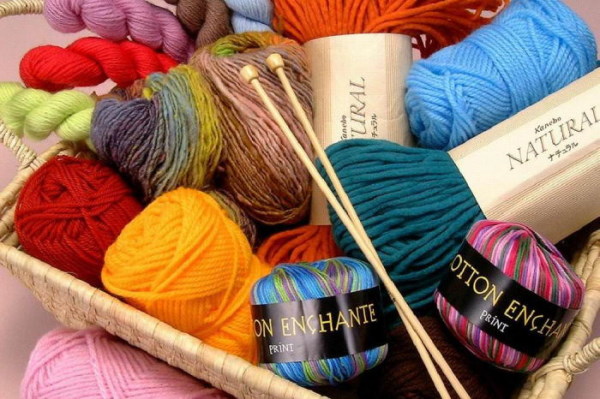
- Hypoallergenic. This property of the working material should be indicated on the packaging. In addition, you should know about the reaction of the child's body to certain materials contained in the yarn used.
- Softness. Children's delicate skin can be very sensitive to rough materials. Yarn for knitting children's clothes should not prick or rub the child's skin.
- Thermal protection. This characteristic feature of yarn is necessary for the production of winter children's clothes. The ability to retain heat is an important property of the constituent fibers of knitting threads for clothes used in the cold season.
- Breathability. Any material for making children's clothing must "breathe". Therefore, the composition of the yarn must be at least 80% natural.
- Wear resistance. Yarn for knitting children's clothes should not shrink significantly after getting wet and washing. It should not fade or deform.
In addition, you should pay attention to the need for frequent care of children's things. Therefore, to simplify this process, you can give preference to yarn, which in small quantities (from 15% to 20%) contains viscose, polyamide, modal or polyester.
You should not choose too fluffy yarn for making a scarf or other children's things. Its long pile will interfere and constantly get into the child's face, and also irritate the delicate baby skin.
When choosing yarn for children's products, you should completely abandon synthetics obtained by processing complex chemical compounds and petroleum products. Knitting threads made from such materials can cause allergies.
For knitting a warm children's scarf, it is better to choose yarn with a thick thread. Then the product turns out voluminous and warm.
Below are the types of yarn that can be used to knit a children's scarf:
| Type of yarn | Main characteristics | Characteristic features |
| Merino wool |
|
|
| Cashmere |
| It has the ability to deform (it is necessary to add threads of merino wool, acrylic and other yarns resistant to deformation at the rate of: 2 threads of cashmere and 1 thread of other yarn). |
| Semi-wool in the ratio: 50% wool yarn + 50% acrylic yarn. |
|
|
| Acrylic |
|
|
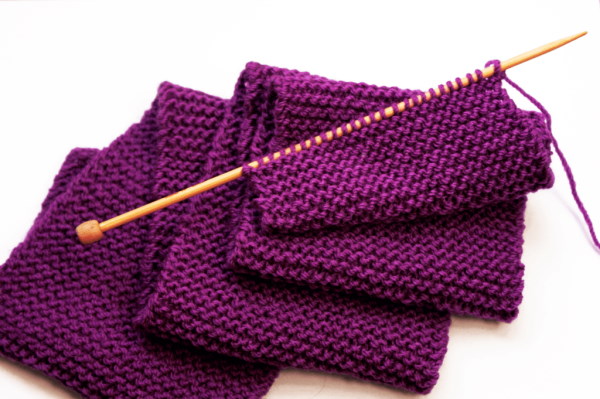 The best brands of yarn for knitting a children's scarf:
The best brands of yarn for knitting a children's scarf:
| Type of yarn | Name | Manufacturer | Compound |
| Made of wool | Baby Alpaca | Gazzal (Türkiye) |
|
| Merino Royal
|
Alize (Türkiye)
| Merino wool – 100% | |
| Australian Merino | Pekhorka (Russia) |
| |
| Made of semi-wool | "Children's whim" | Pekhorka (Russia) |
|
| Baby Wool and Baby Wool XL | Gazzal (Türkiye) |
| |
| "Bambino" | Kamtex (Russia) |
|
Yarn consumption for knitting a garter stitch scarf
Despite the fact that garter stitch is the easiest to perform, to knit any product you need to know how much yarn is needed for the work. This information depends on the thickness and length of the threads in the skein and on what knitting needles will be used for knitting.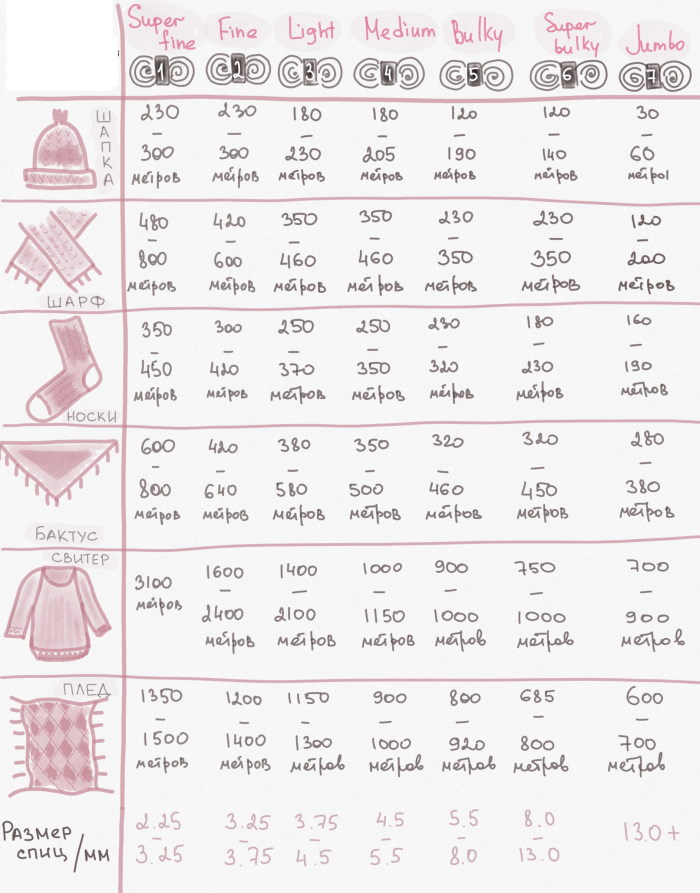
One of the most proven ways to calculate yarn consumption is to knit a sample and calculate the required parameters.
Having decided on the width of the scarf in centimeters, this value should be divided by the width of the knitted sample (measured with edge loops), and then the resulting value should be multiplied by the number of loops in the sample.
For example: 20:11*12=21.8. When rounded, it turns out that you need to cast on 22 loops to knit a scarf 20 cm wide.
Next, you need to calculate how many meters of yarn you will need for the work. To do this, use a knitted sample (for example, with sides of 20 by 20 cm). You need to know what length of thread was used for it. This figure should be divided by 400. You will get the yarn consumption rate per 1 sq. cm of scarf.
Next, you need to calculate the area of the canvas of the upcoming work. To do this, the length of the proposed scarf must be multiplied by its width.
All that remains is to multiply the resulting figure by the thread consumption rate from the previous calculation. The result is the number of meters of yarn needed for knitting.
When buying yarn, you should be guided by the markings and buy as many skeins as you need for knitting (preferably with a small reserve).
How to Knit a Simple Garter Stitch Scarf: Step-by-Step Instructions
A garter stitch scarf with classic knitting needles is very easy to knit.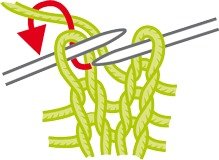
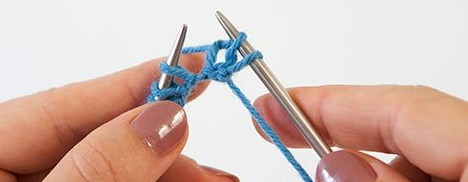
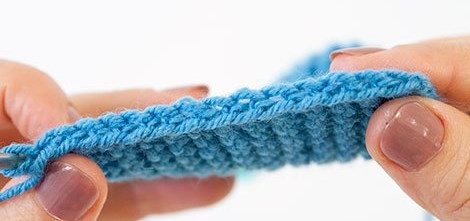
To work you will need:
- yarn (1 skein 200 m/100 g);
- two knitting needles (3.5 mm);
- scissors (for cutting the thread at the end of work);
- crochet hook for correcting/hiding the beginning and end threads of knitting and attaching tassels along the edges (optional).
To begin, you should select yarn with the desired thread thickness, select knitting needles of the right size and determine the length and width of the finished product.
For children of different ages, the scarf will have its own sizes:
- for children from 1 year to 3 years old – 15 cm by 140 cm;
- for children from 3 to 10 years old – 17 cm by 150 cm (width and length are selected at will).
Work order (classic garter stitch)
Instructions:
- Take knitting needles and cast on 30 stitches.
- Carefully remove 1 knitting needle.
- Remove the 1st loop (edge) onto the right knitting needle (the working thread should be behind the work).
- Next, each of the cast-on stitches should be knitted through the front wall using the front stitch, inserting the right working needle from left to right.
- Knit all the loops in the row in this way, including the last loop.
- Turn the work over.
- The second and all subsequent rows are knitted in exactly the same way, with the first edge loop removed to the right knitting needle.
- When the fabric of the required length is knitted, you need to finish knitting and close the loops. To do this, remove the 1st edge loop onto the working knitting needle.
- Knit the 2nd loop with the front stitch.
- With the left needle, pull the 1st loop through the 2nd on the right needle, inserting it behind the front wall. One loop remains on the right needle.
- The same thing should be done with the next loop. It is knitted with the front stitch. The loop on the right knitting needle should be pulled through it. Each time, 1 loop should remain on it.
- Loop by loop, you need to close the entire edge.
- Hide the beginning and end threads in the rows of knitting using a crochet hook. You can close the last row in knitting with the same hook, removing each loop and threading the working thread through it.
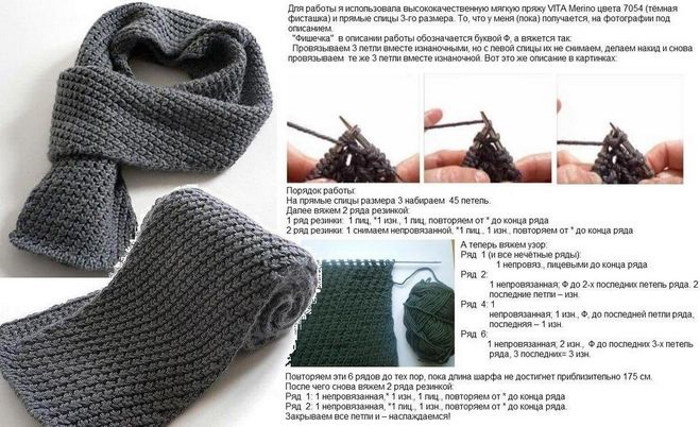
You can decorate the edges of the scarf with fringe made from working yarn.
To do this you need:
- cut pieces of thread of the same length with scissors;
- insert the hook into the outermost closed loop and pick up the folded thread at the fold;
- slightly pull the resulting loop into the product;
- Use a crochet hook to pick up the ends of the thread and thread them through the resulting loop;
- tighten;
- repeat the procedure until the end of the working edge, threading and tightening the threads in each closed loop;
- trim the resulting fringe so that the edge is even.
The work is ready.
You can knit a scarf using any other garter stitch method and decorate it with fluffy pom-poms or tassels, a beautiful bright pattern, or use yarn of several colors in your work.
Video about knitting a scarf with garter stitch
Simple lightweight garter stitch knit scarf:
